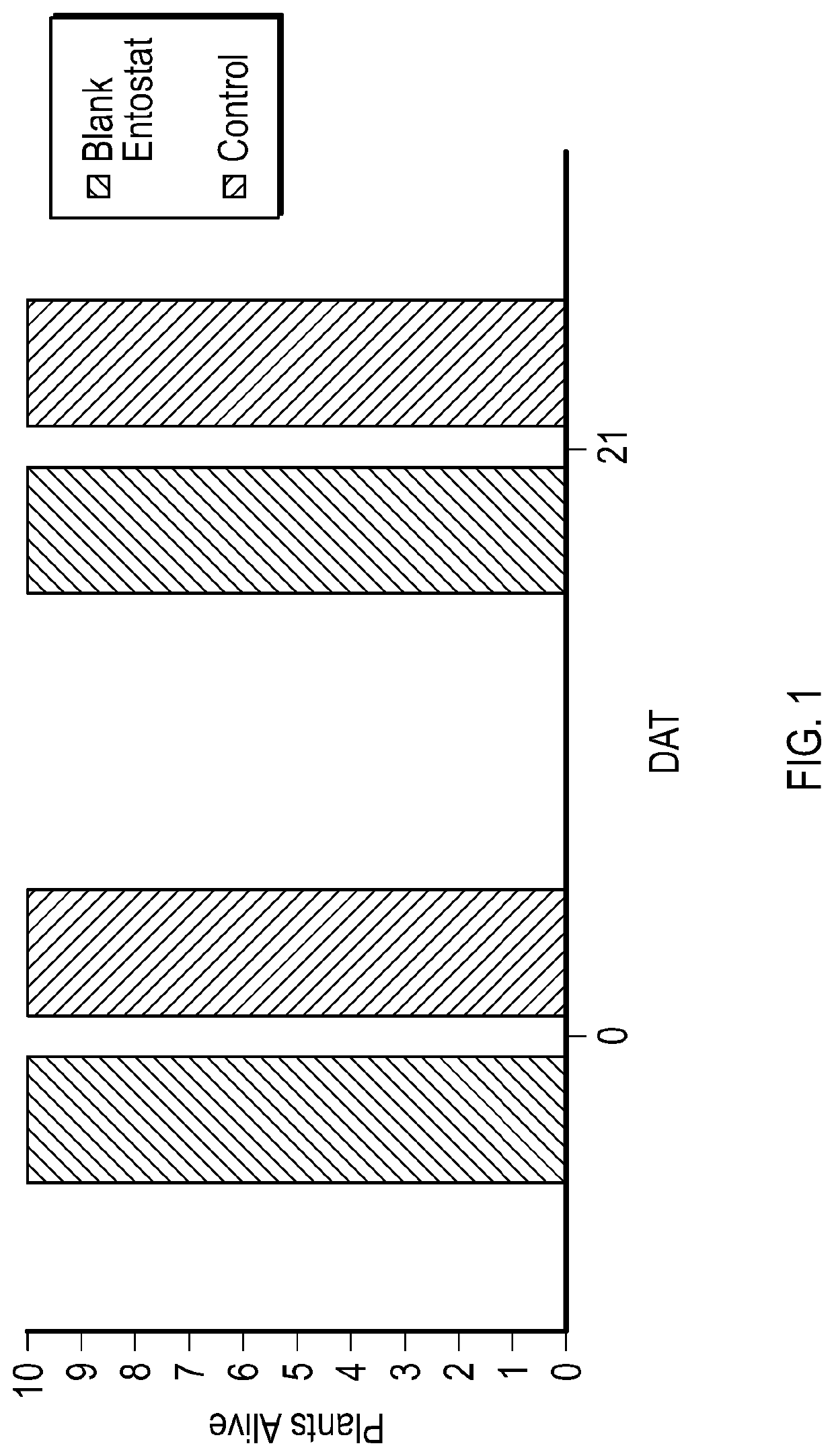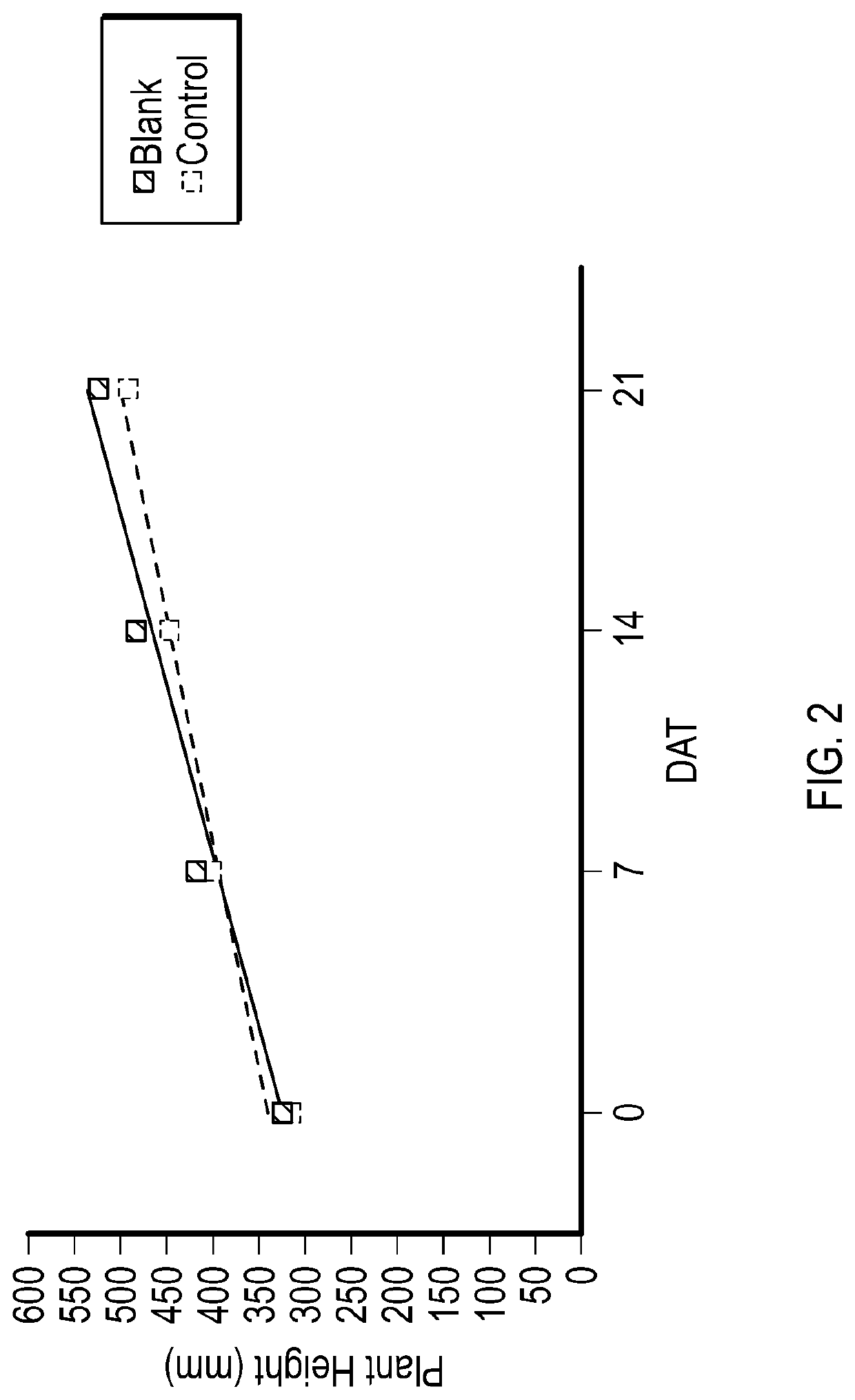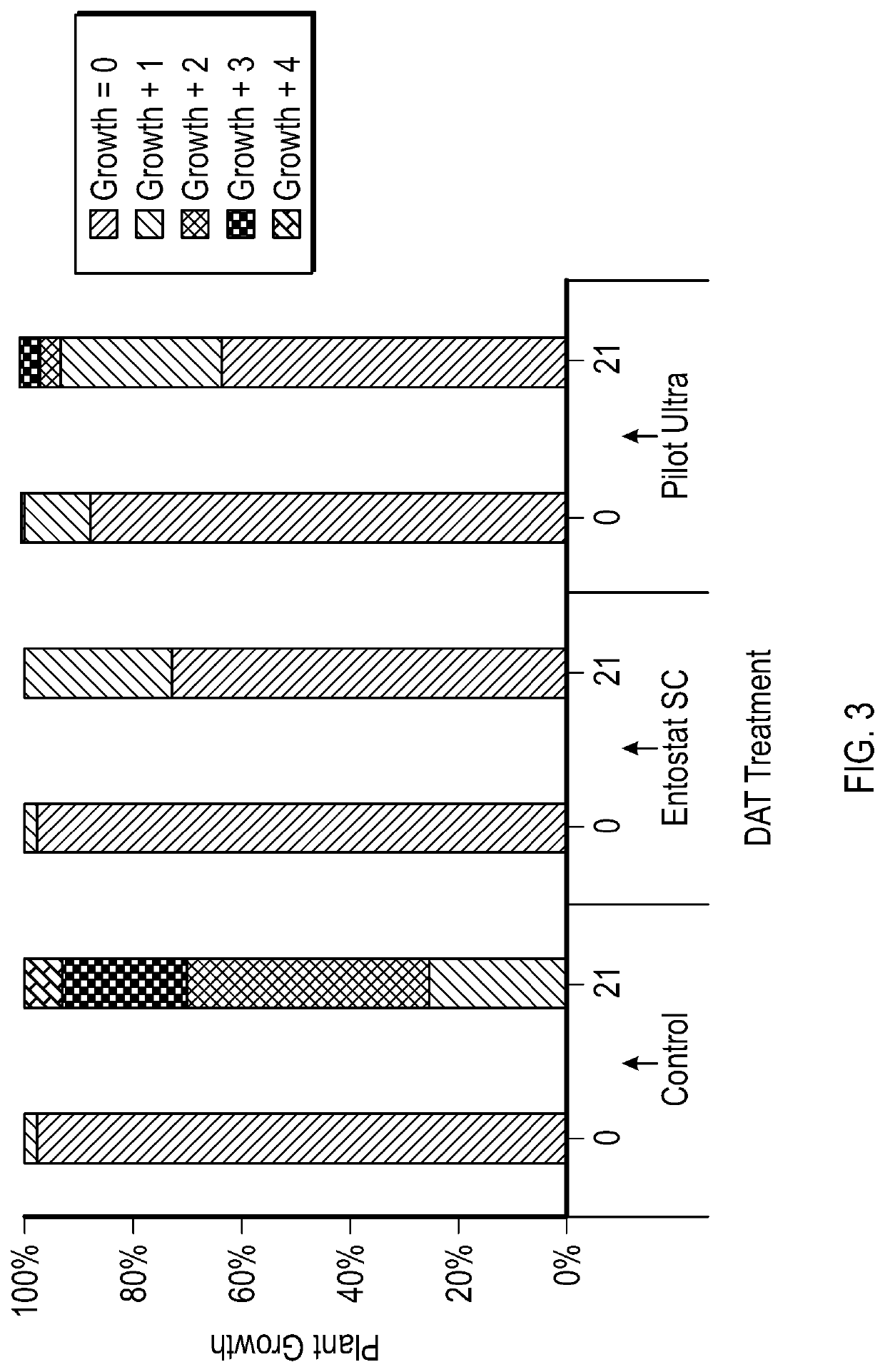Compositions for application to aerial parts of plants
a technology for aerial parts and plants, applied in the field of compositions, can solve the problems of high chemical load, economic loss, and the weeds do not all germinate at the same time, and achieve the effects of improving mixing, handling, and effectiveness, and enhancing post-emergence herbicide performan
- Summary
- Abstract
- Description
- Claims
- Application Information
AI Technical Summary
Benefits of technology
Problems solved by technology
Method used
Image
Examples
examples
[0052]Micro-particles are widely used in controlled-release formulations, as these types of formulations are capable of delivering active ingredient slowly and continuously for a longer duration. These types of formulations are often cited as having an enhanced environmental profile as they can potentially reduce losses due to volatilisation, degradation and leaching, to maintain the bio-efficacy of the active ingredient (Sopenia et al. 2007; Nair et al. 2010; Gogos et al. 2012; Campos et al. 2014). How a pesticide is contained in a micro-particle can range from core-shell microcapsule, where the pesticide is enveloped in a capsule, to a microsphere, where the active is homogeneously or heterogeneously dispersed (FIG. 9).
[0053]The mechanism of controlled release can generally be explained as: (1) chemically-controlled (e.g. from bio-erodible systems), or (2) diffusion-controlled (i.e. based on a concentration gradient) (Lee and Good, 1987). In these types of formulations, only part ...
PUM
 Login to View More
Login to View More Abstract
Description
Claims
Application Information
 Login to View More
Login to View More - R&D
- Intellectual Property
- Life Sciences
- Materials
- Tech Scout
- Unparalleled Data Quality
- Higher Quality Content
- 60% Fewer Hallucinations
Browse by: Latest US Patents, China's latest patents, Technical Efficacy Thesaurus, Application Domain, Technology Topic, Popular Technical Reports.
© 2025 PatSnap. All rights reserved.Legal|Privacy policy|Modern Slavery Act Transparency Statement|Sitemap|About US| Contact US: help@patsnap.com



